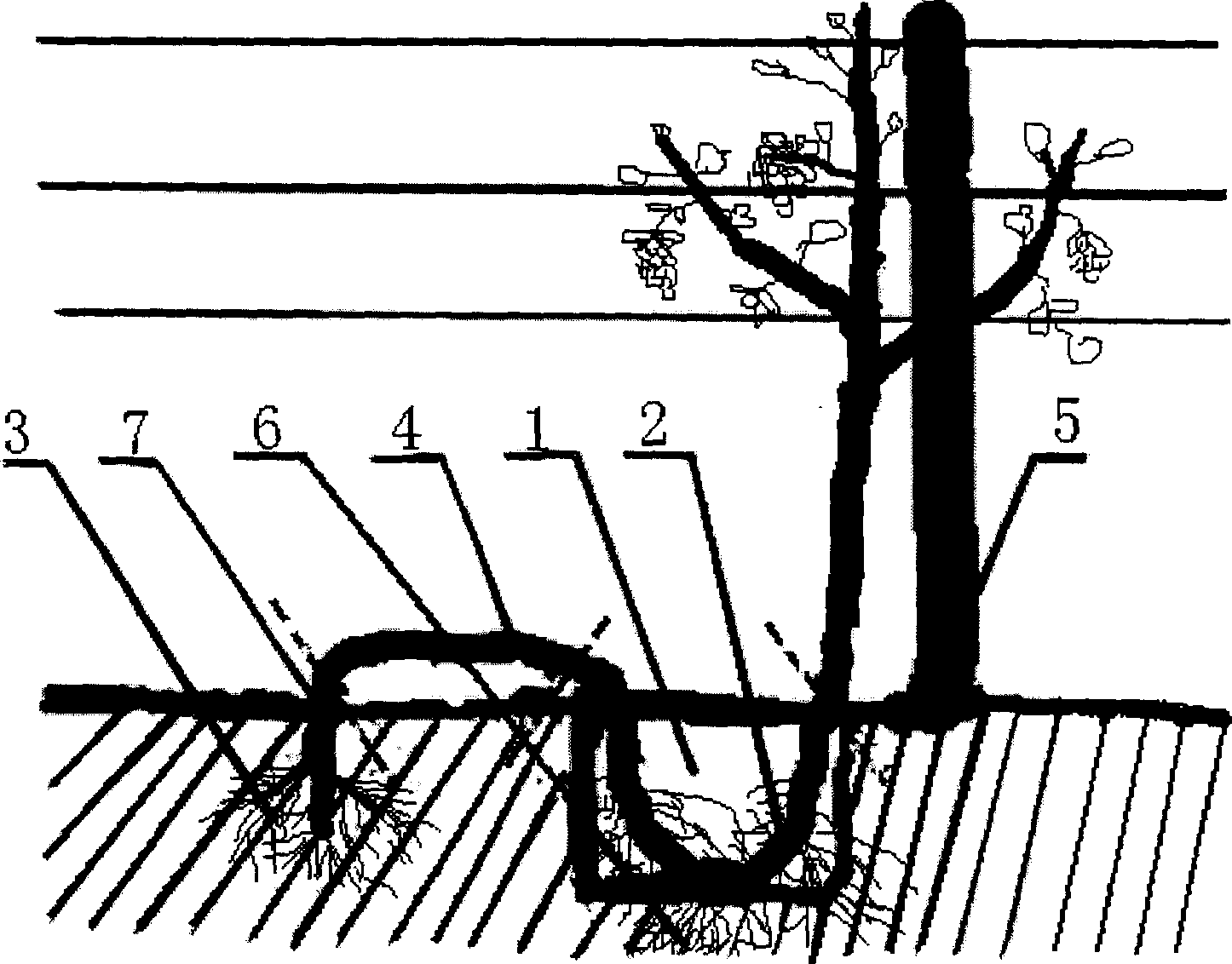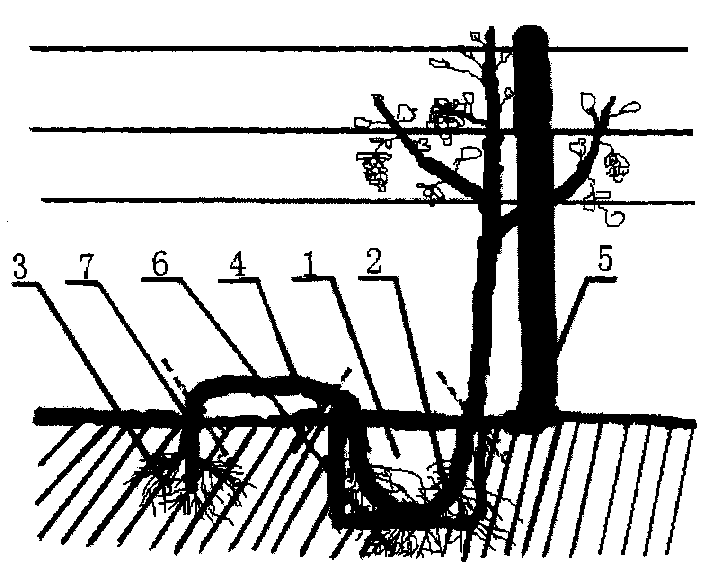Method for cultivating vine
A grape vine and trunk technology, applied in the field of grape vine cultivation, can solve the problems of reducing the ability of the tree to transport nutrients, declining grape yield, and too long trees, so as to keep the plants from aging, facilitate planting management, and maintain full fruit period effect
- Summary
- Abstract
- Description
- Claims
- Application Information
AI Technical Summary
Problems solved by technology
Method used
Image
Examples
Embodiment Construction
[0010] Such as figure 1 The shown method for cultivating grape vines, grape vines are planted earlier, after planting, dig a ditch (1) horizontally or vertically beside the vines, and a section of stem (1) of the current year or perennial trunk or branches of the vines 2) Put it into the ditch (1), bury it in the soil, and make the stem (2) buried in the ditch (1) through various methods such as applying ring fertilizer or bio-organic fertilizer, pouring enough water, covering mulch, etc. ) to develop a root system (6), and then uniformly move the piles (5) to keep the original row spacing. For vines that have been planted for a longer period of time, the annual or perennial trunk or branches that are embedded in the ditch (1) with a section of the stem (2) are preferably fruit-bearing, which is conducive to ensuring the vine's output and reduce workload. In order to prevent the root system (3) from being dug up, the distance between the side of the ditch (1) near the base o...
PUM
 Login to View More
Login to View More Abstract
Description
Claims
Application Information
 Login to View More
Login to View More - R&D
- Intellectual Property
- Life Sciences
- Materials
- Tech Scout
- Unparalleled Data Quality
- Higher Quality Content
- 60% Fewer Hallucinations
Browse by: Latest US Patents, China's latest patents, Technical Efficacy Thesaurus, Application Domain, Technology Topic, Popular Technical Reports.
© 2025 PatSnap. All rights reserved.Legal|Privacy policy|Modern Slavery Act Transparency Statement|Sitemap|About US| Contact US: help@patsnap.com


